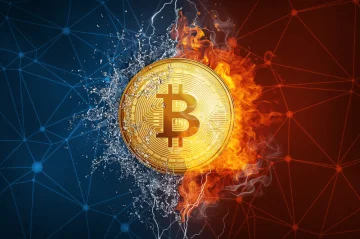
Table of Contents
The primary word associated with Bitcoin is decentralisation. This means that with no central authority presiding over its flow and distribution, the question on the mind of many is where do Bitcoins come from?
It is easy to understand that fiat currencies are everywhere because Central banks are there to decide when and how to print and distribute them. Bitcoin is a virtual currency which means you don’t get to see them in print anywhere.
If you’ve been on the crypto scene this year, you’d note that Bitcoin hasn’t been ideally used as the day-to-day transaction entity fiat currencies are used for. In fact, it is widely referred to as digital gold. So, like gold, Bitcoin is mined to get it in circulation.
Just as understanding Bitcoin’s underlying technology is easily forgone; its mining is also overlooked because it would mean understanding lots of technical jargons. It is, however, relatively easy to understand. Let’s see.
What Is Bitcoin Mining?
Bitcoin is built on the foundation of Blockchain and as such, mining Bitcoin is related to verification of blocks on Blockchain. Hence, you could see the Bitcoin blockchain as a mine which requires verification of identity before miners can go in.
Bitcoin mining, as defined by FXEmpire, is the verification of blocks of transactions on the Bitcoin blockchain. Transactions are broadcasted on the network to be verified and recorded on the Bitcoin blockchain.
As with physical mines, Bitcoin mining is done by a team of miners with super-powered computers as their working gears and verification of identities is done via the provision of a Proof-of-Work (PoW) as dictated by the Bitcoin Protocol.
You see, each block on the Bitcoin blockchain is encrypted with a series of complex algorithms and can only be accessed by the provision of solutions. As such, miners are required to provide solutions to these algorithms for block verification and earn their dues (which is mostly in form of Bitcoins) in turn.
What Is Proof-Of-Work?
The PoW as required by the Bitcoin Protocol is a form of data which is referred to as nonces and these nonces are like the chains that strings each block on the Bitcoin Blockchain together.
Miners are required to find for the right nonce for the blocks to be verified and it is no simple feat. As described above, a complex algorithms are required to be solved which usually consists of a string of figures. The miners are required to play their hands at random figures to guess the correct nonce for the block to be verified.
You can imagine the level of computational power required to verify a transaction. This is why Bitcoin mining requires a team for verification and the hash power and hash rate are highly considered in mining.
Bitcoin Cloud Mining
Before getting on with this, it is important to verify the significance of hash power and hash rate in Bitcoin mining. The Bitcoin mining rig (i.e. those super computers mentioned earlier) is programmed to run an encrypted hash function on a block header at a steady rate for verification of transactions to be possible.
Hence, you could see rate as the hash rate and the power of the mining rig as the hash power. This is programmed such that each time a new hash is tried out, a different number is selected as the random element of the block header and this is the nonce that was mentioned above.
That being said, Bitcoin Cloud Mining simply creates a medium for the reception of newly mined Bitcoins without owning a mining rig or having an in-depth technical knowledge on mining.
They are created by mining companies which set up mining rigs in their companies and take charge of mining Bitcoins. All the user or to-be miner needs to do is to buy a proportion of the Bitcoin miners hash power and Bitcoins are gotten.
Bitcoin Mining Process
Transactions are verified for validation and then, transferred to a block. The header of the preceding block is selected and paired with the nonce to create a hash. Series of calculative guesses are made and a hash number is generated.
This hash number is entered into the new block and this is Proof-of-Work required. The hash must be less than the target value for the PoW to be solved and with t solved, a new block is added to the Bitcoin blockchain and the Bitcoin is mined.
Hope this guide has helpen you out in your understanding of the Bitcoin mining process. If you need information on how to trade cryptocurrency, make sure to visit our telegram!

